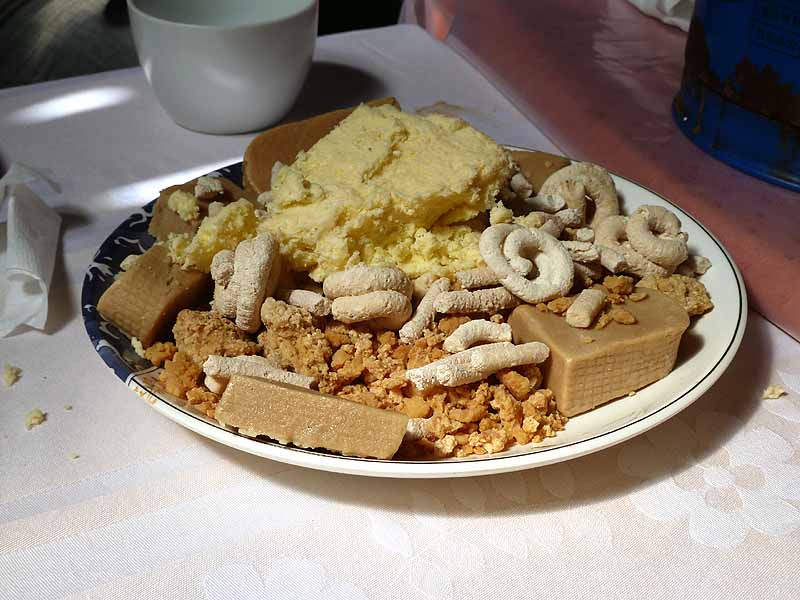Mongolian Food

The extreme climate and nomadic way of life has affected the traditional diet, so the Mongolian cuisine primarily consists of dairy products, meat, and animal fats. Use of vegetables and spices is limited. Due to geographic proximity and deep historic ties with China and Russia, Mongolian cuisine is also influenced by Chinese and Russian cuisine.
Meat is the basis of the diet, primarily mutton, with goat, horse, camel and yak meat dishes also on offer. Rice, flour, potatoes and onions are other main ingredients while green vegetables are rarely encountered outside the capital.
The national dish is buuz - steamed dumpling filled with mutton. These are eaten in great quantities during the Tsaagan Sar (New Year) festival.
Huushuur - a deep fried mutton pancake - is another popular dish, particularly during the summer Naadam festivities.
The most surprising cooking method is only used on special occasions. Meat (often together with vegetables) gets cooked with the help of stones, which have been preheated in a fire. Horhog consists of chopped goat, potatoes and onions slowly steamed/cooked. Scalding hot rocks are placed inside the container to create the steam and once extracted it is customary to pass the stones from hand to hand.
The most prominent national beverage is airag, fermented mare's milk. The alcohol content is less than that of beer, but can have noticeable effects. Be careful, if you aren't accustomed to drinking sour milk products the first time might give you diarrhea as your stomach gets accustomed to it. Mongolians are tea drinkers or rather a milk beverage diluted with water and few tea leaves. Russian vodka and Mongolian vodka are widely available.